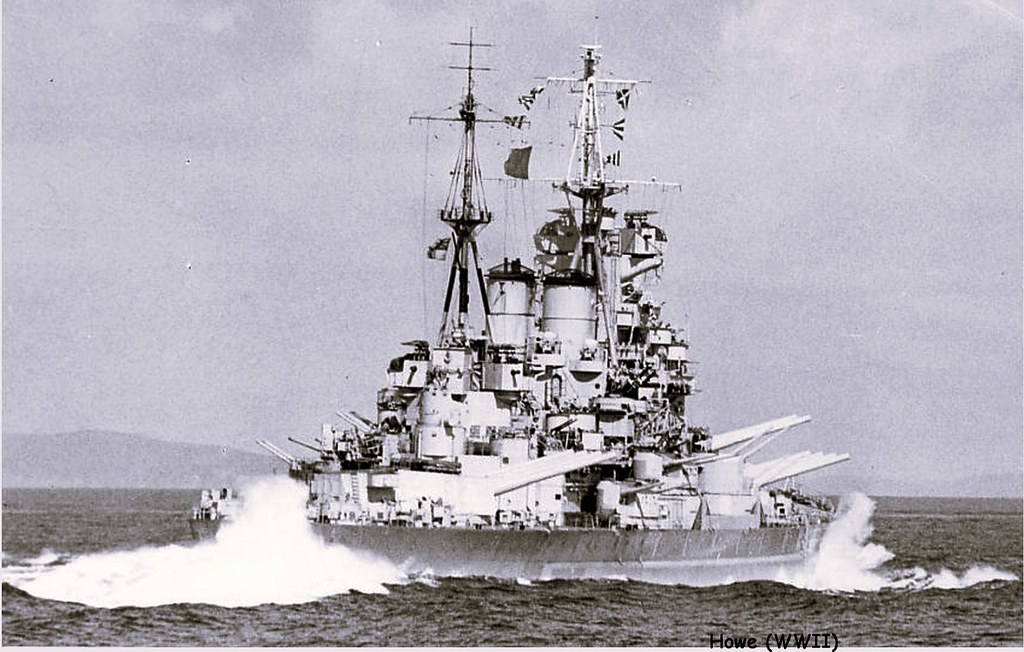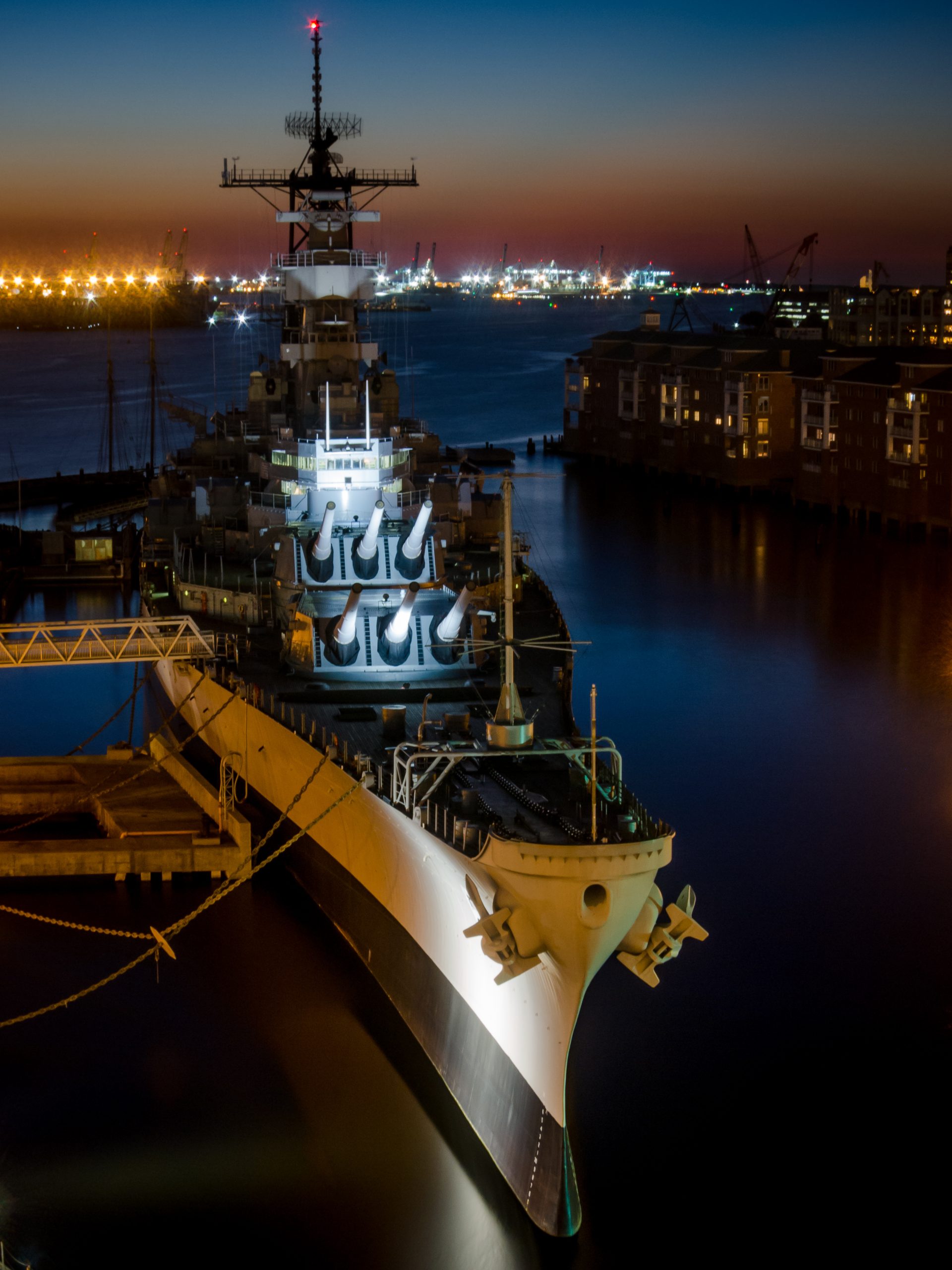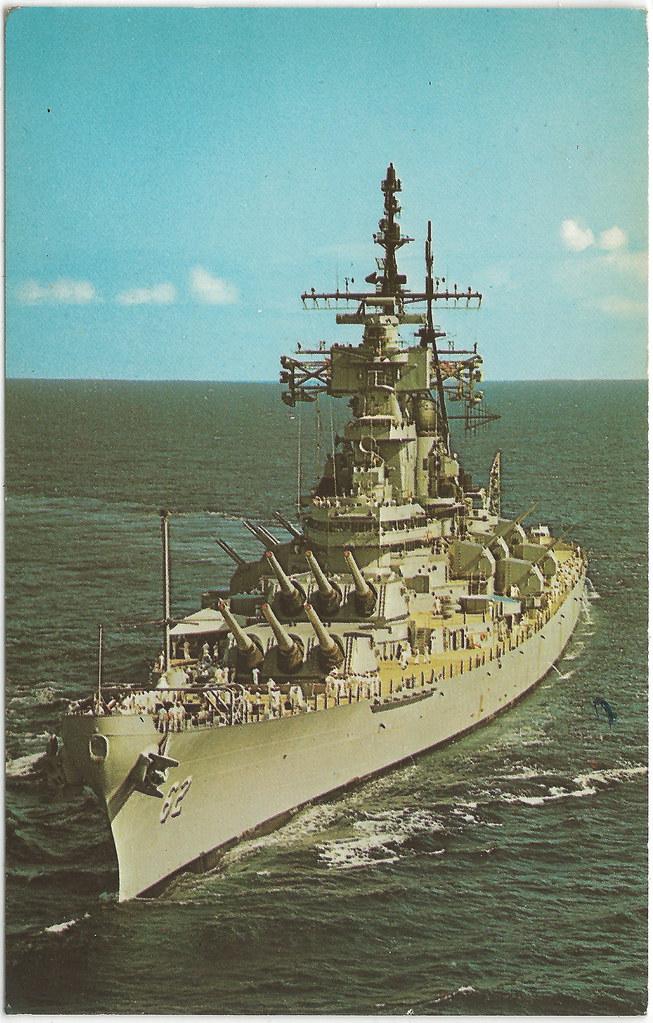
The Second World War was a pivotal period for naval warfare, marking the last hurrah of the battleship as the dominant force on the high seas.

As titans of steel clashed on the oceans, the era of these behemoths was drawing to a close, but not without a final display of their awesome power and resilience.

The Royal Navy’s HMS King George V, HMS Rodney, HMS Howe, and HMS Anson stood as monuments of Britain’s maritime legacy, while the U.S. Navy’s battleships like the USS Texas, USS Alabama, USS Iowa, USS New Jersey, and USS Missouri brought new meaning to naval superiority.

Britain, once the master of the waves with its seemingly invincible Royal Navy, found its fleet of battleships playing a critical role in World War II despite the decline of its global supremacy.

The HMS King George V, for instance, was instrumental in the demise of the German battleship Bismarck, a vessel whose infamy still echoes in naval history. “The 745-foot vessel was large and sophisticated for her era and served with distinction throughout the Second World War,” the historical recount notes.

The HMS Rodney, another British stalwart, was also pivotal in the destruction of the Bismarck. Although designed under the limitations of the Washington Naval Treaty and thus smaller in size, the Rodney was nothing short of heroic in its wartime service. Its participation was so intense that, by war’s end, it was allocated to the reserve fleet and eventually sold for scrap.

On the other side of the Atlantic, the USS Texas (BB-35) distinguished itself as the only battleship with service records in both World Wars. It not only provided vital escort and blockade duties but also took part in the Normandy landings, supporting the Allied invasion of Europe.

What’s more, this battleship’s longevity is remarkable, still standing as a museum ship, a testament to its storied past.

The USS Alabama (BB-60) and USS Iowa (BB-61), alongside the formidable USS New Jersey (BB-62) and USS Missouri (BB-63), are among the US Navy’s pride. The Alabama’s journey from the East Coast across the Pacific to its role in capturing the Gilbert Islands and the USS Iowa’s role as a “fast battleship,” escorting aircraft carrier task forces and bombarding shore positions, highlights the multifaceted capabilities of these warships.

The USS New Jersey earned more battle stars for combat actions than its sister ships, demonstrating exceptional service in multiple theaters of war.

“In total, USS New Jersey earned nine battle stars for service in the Second World War, four more for Korea, three for the Vietnam War, and three for actions in Lebanon and the Persian Gulf Region,” according to a historical account.

The USS Missouri, famously known as “Mighty Mo,” not only earned battle stars but also served as the site of the official Japanese surrender, ending World War II.

This profound moment was broadcast worldwide, marking an indelible moment in history on the decks of an Iowa-class battleship.

These battleships are not just steel and gunpowder; they are bearers of history, their decks and halls echoing with the stories of battles fought and won.

The memories of those who served aboard them live on in their preserved state as museum ships. They provide a tangible link to the sacrifices of the past and stand as monuments to human ingenuity and martial spirit.
Relevant articles:
– Ranked: The Royal Navy’s 4 Best Battleships of World War II, The National Interest
– The 5 Best Battleships of World War II, nationalinterest.org
– The 10 Most Legendary Ships Of WW2 Ranked From Worst To Best, SlashGear
– RANKED: 5 Best Battleships of All Time, 19FortyFive

